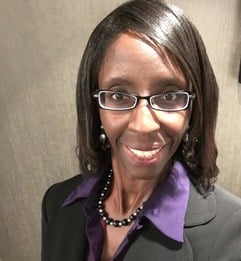“Of all forms of inequity, injustice in health care is the most shocking and inhuman.”
— Martin Luther King, Jr., National Convention of the Medical Committee for Human Rights, Chicago, 1966
Do you treat all your patients the same? Have you heard nurses make statements such as, “Oh, it’s the drug abuser” or “We know how ‘they’ are?” Have you ever thought how your perspective or worldview impacts your care? You may have unconscious bias toward your patient.
Implicit bias refers to attitudes that affect understanding, actions, and decisions in an unconscious manner through cognitive shortcuts. Relying on cognitive shortcuts leads one to make decisions based on inaccurate or incomplete information resulting in ineffective or insufficient care. Unfortunately, nurses aren’t immune to implicit bias. Studies show implicit bias among nurses is commonly directed toward the elderly; lesbian, gay, bisexual, transgender (LGBT) persons; and obese patients. This bias hinders nurse-patient relationships, nurses’ assessments, and patient care.
Implicit bias affects both patients and nurses. As nurses, we must acknowledge that implicit bias exists and address it directly. Failure to do so will only increase healthcare disparities. Disparities in healthcare aren’t new. The Tuskegee Syphilis Study and AIDS crises of the 1980s are only two recent reminders of the inequalities of healthcare delivery and treatment. The Institute of Medicine’s pivotal report, Unequal Treatment: Confronting Racial and Ethnic Disparities in Healthcarepublished in 2002 identified longstanding inequities among racial/ethnic groups and discussed how bias perpetuates health disparities. Twenty years after this published report, research indicates little has change. African Americanpatients’ pain is treated less aggressively than Caucasian patients’ pain. Women, regardless of race, are less likely to be treated for pain then men, and LGBT persons continue to experience indirect, subtle, or unintentional discrimination by physicians and nurses. In short, implicit bias perpetually widens the chasm of health disparities disproportionately among ethnic/racial groups, the poor, and other vulnerable persons.
Nurses are in a unique position to address implicit bias. Doing so can improve the patient experience and foster equitable, quality of care. Here’s what you can do
Identify implicit bias. Nurses can identify implicit bias by taking the Implicit Association Test (IAT) developed by Project Implicit, a nonprofit organization dedicated to investigating conscious awareness and bias. It would also be ideal for nursing schools and colleges to incorporate implicit bias training and assessment into their undergraduate and graduate programs.
Make a connection. According to the Institute of Healthcare Improvement, one method to decrease bias and increase understanding is to challenge yourself to meet and engage with people who are not like you. Do you make personal time to learn about other cultures? Do you know the history of healthcare experience of other racial/ethnic groups and LGBT persons? Understanding other’s experience can foster empathy.
Identify your privilege and use it to create equity. Everyone has privilege; learn to identify yours. Are you a native English speaker? If so, when you are assigned a patient who is a non-English speaker or hearing-impaired, you can contact interpreter services to foster more effective communication. Are you heterosexual? Remember that every patient you encounter may not be. Make a habit when greeting your patients to ask them their name and what they would like to be called. This demonstrates respect and sensitivity to persons who identify as LGBT.
Practice cultural humility. Acknowledge your limited knowledge about a patient’s heritage, beliefs, or experience. Allow patients to share their personal stories with you and collaborate with them about care. The simple act of listening to a patient can have a big impact. Let patients help you help them. When your patients seek spiritual guidance, ask them about their faith and then request a chaplain, rabbi, or imam visit with according to their religious beliefs.
Remind yourself why you became a nurse. Every once in a while, reflect and remind yourself why you decided to become a nurse and what it means to be a nurse. Read the stories of pioneers in nursing such as Dorothea Dix, Clara Barton, Florence Nightingale, Sojourner Truth, Harriet Tubman, and Lillian Wald. Ask yourself what drives your nursing practice? Refer to the American Nurses Association’s Code of Ethics for Nurses With Interpretive Statements(nursingworld.org/practice-policy/nursing-excellence/ethics/code-of-ethics-for-nurses/coe-view-only/).
Implicit bias in healthcare is real and is detrimental to healthcare outcomes and patient care. However, nurses can address implicit bias by identifying it, understanding it, and addressing it. Ask yourself, do you truly see your patients? Do you see them as theyare, not how youare? Remember that patients are people first. Each person has a distinct history and story. Practicing patient-centered, culturally competent care can reduce implicit bias and increase compassion.
Stacy D. Winters is an adult-gerontology nurse practitioner working as a clinical resource nurse at Frederick Memorial Hospital in Frederick, Maryland.
References
Butts JB, Rich KL. Nursing Ethics: Across the Curriculum and into Practice. Burlington, MA: Jones & Bartlett Learning; 2016.
Center for Transforming Healthcare. centerfortransforminghealthcare.org
Chinn PL. History of Nursing. Hagerstown, MD: Lippincott Williams & Wilkins; 2009.
FitzGerald C, Hurst S. Implicit bias in healthcare professionals: A systematic review. BMC Med Ethics. 2017;18(1):19. bmcmedethics.biomedcentral.com/articles/10.1186/s12910-017-0179-8
George TP, DeCristofaro C, Murphy PF. Unconscious weight bias among nursing students: A descriptive study. Healthcare. 2019;7(3):106. ncbi.nlm.nih.gov/pmc/articles/PMC6787661/
Institute for Healthcare Improvement. How to reduce implicit bias. ihi.org/communities/blogs/how-to-reduce-implicit-bias.
Morris M, Cooper RL, Tabatabai M, et al. Training to reduce LGBTQ-related bias among medical, nursing, and dental students and providers: A systematic review. BMC Med Educ. 2019;19(1):325. bmcmededuc.biomedcentral.com/articles/10.1186/s12909-019-1727-3
Narayan MC. Addressing implicit bias in nursing: A review. Am J Nurs. 2019;119(7):36-43.
Project Implicit. implicit.harvard.edu/implicit
Smedley BD, Stith AY, Nelson AR. Unequal Treatment: Confronting Racial and Ethnic Disparities in Health Care. Washington, D.C.: National Academy Press; 2003.


















